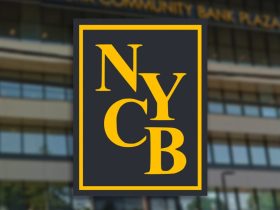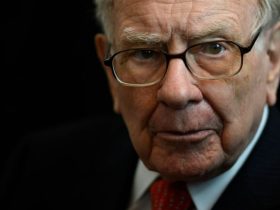Hi! In this week’s ETF Wrap, you’ll see the spot in markets investors liked in August as ETF flows trended below the historical average in a down month for stocks.
Please send feedback and tips to [email protected] or [email protected]. You can also follow me on Twitter at @cidzelis and find me on LinkedIn. Isabel Wang is on Twitter at @Isabelxwang.
Sign up here for our weekly ETF Wrap.
August looked weaker than usual for sentiment surrounding exchange-traded funds.
“It’s been quite the summer swoon,” said Matthew Bartolini, head of SPDR Americas research at State Street Global Advisors, in a phone interview. This month is shaping up as one of the biggest August slumps for U.S.-listed ETF flows ever, with just $11.1 billion of inflows through Aug. 30, he said.
Investors poured more money into bond ETFs, particularly funds providing exposure to short-duration fixed-income, than into equities during the stretch as the U.S. stock market pulled back, according to Bartolini.
“Fixed income is being significantly supported by basically one exposure” this month, ultra-short and short-term government bonds, he said. Bartolini found that ETFs focused on that part of the market represented around 82% of the total $9.2 billion flowing into bond funds as of Aug. 30.
Investors are attracted to yields on ultra-short-term Treasurys, with the three-month T-bill yielding 5.46% on Thursday afternoon, according to FactSet data, at last check. The SPDR Bloomberg 1-3 Month T-Bill ETF
BIL
has attracted around $2 billion so far this month, according to Bartolini.
The fund has outperformed the broader U.S. bond market this month, FactSet data show. The SPDR Bloomberg 1-3 Month T-Bill ETF had a total return of 0.4% in August through Wednesday, while the Vanguard Total Bond Market ETF
BND
lost 0.8% over the same period.
Meanwhile, the U.S. stock market has seen losses in August, with the S&P 500 index down around 1.8%. ETF investors have contributed around $5 billion to equities this month as of Aug. 30, while commodity funds saw about $3.5 billion of outflows in that period as investors shunned gold in particular, said Bartolini.
Among sectors, technology, communication services and consumer discretionary had attracted the biggest inflows in August through Wednesday, while traditionally defensive areas such as utilities and consumer staples saw outflows, according to his research.
“The positioning would suggest that investors are not expecting a recessionary economy,” he said, as they’re not “stockpiling” sectors traditionally considered recession-proof.
Options traders making bets tied to big U.S equities ETFs don’t seem too worried about downside risk after August’s pullback, according to OptionMetrics.
“There is no real excess fear in terms of crash risk,” said Garrett DeSimone, head of quantitative research at OptionMetrics, in a phone interview.
Based on options activity linked to the SPDR S&P 500 ETF Trust and Invesco QQQ Trust Series I
QQQ,
traders aren’t pricing in a relatively higher probability of a large selloff in U.S. the stock market, according to his research, which looked at the 60-day “skew.” The skew measures the relative pricing of out-of-the-money puts to calls in the options , serving as an indicator of tail-risk hedging, according to DeSimone.
Meanwhile, U.S. stocks have been moving more in tandem in August, based on implied correlations extracted from options prices, compared to earlier in 2023, DeSimone’s research found.
But that’s against the backdrop of implied correlations falling through the summer. For his analysis, he looked at the top constituents of SPDR S&P 500 ETF Trust, which trades under the ticker SPY.
In August the SPDR S&P 500 ETF Trust
SPY
booked its worst monthly performance since February with a decline of around 1.6%, FactSet data show.
With overall ETF flows for August tracking below the historical average for the month, only results seen in 2013, 2019 and 2015 appear worse so far, according to Bartolini.
“August tends to be the weakest out of any other month throughout the year” in terms of capital that investors contribute to ETFs, he said. “This August is trending to be one of the weakest Augusts of all time.”
As usual, here’s your look at the top- and bottom-performing ETFs over the past week through Wednesday, according to FactSet data.
The good…
| Top Performers | %Performance |
|
ARK Innovation ETF ARKK |
7.8 |
|
ARK Next Generation Internet ETF ARKW |
7.5 |
|
United States Natural Gas Fund LP UNG |
6.8 |
|
ARK Fintech Innovation ETF ARKF |
6.8 |
|
First Trust Nasdaq Clean Edge Green Energy Index Fund QCLN |
6.5 |
| Source: FactSet data through Wednesday, Aug. 30. Start date Aug. 24. Excludes ETNs and leveraged products. Includes NYSE, Nasdaq and Cboe traded ETFs of $500 million or greater |
…and the bad
| Bottom Performers | %Performance |
|
iShares MSCI Chile ETF ECH |
-1.7 |
|
Invesco DB US Dollar Index Bullish Fund UUP |
-0.8 |
|
WisdomTree Floating Rate Treasury Fund USFR |
-0.4 |
|
Quadratic Interest Rate Volatility & Inflation Hedge ETF IVOL |
-0.2 |
|
VanEck Rare Earth/Strategic Metals ETF REMX |
-0.1 |
| Source: FactSet data |
New ETFs
- American Beacon Advisors said Thursday that it launched its first exchange-traded fund, the American Beacon AHL Trend ETF AHLT. The new fund will use “an active, quantitative and systematic trading strategy” as it aims to profit from price trends across stocks, bonds, commodities and currencies.
- Strive Asset Management announced on Thursday the launch of the Strive FAANG 2.0 ETF FTWO, which seeks to track an index of companies operating in areas relating fuel, aerospace, agriculture, nuclear and gold.
-
Madison Investments said Aug. 29 that it launched the Madison Aggregate Bond ETF
MAGG,
an actively managed fund that has an expense ratio of 0.40%. -
AXS Investments announced Aug. 28 that it was launching the AXS Real Estate Income ETF
RINC.
The fund seeks to track the performance of the Gapstow Real Estate Income Index, which is designed to track publicly traded mortgage REITs, or real estate investment trusts.
Weekly ETF reads
Read the full article here













Leave a Reply